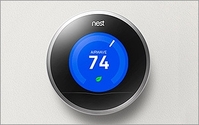electronics
Smart Home Devices Are The Next Big Thing
- by Aaron Baar , October 20, 2014

Devices that connect to the Internet to provide greater convenience, security and efficiency for the home are shaping up to be the next hot consumer electronic category.
According to a survey from the Consumer Electronics Association and Parks Associates, 20% of U.S. households with broadband intend to buy one or more smartphone devices over the next year. In all, the category should grow from $2.4 billion in 2014 to more than $4 billion by 2017, according to Steve Koenig, director of industry analysis at the CEA.
“This is something we see as a mass market opportunity, in contrast with, say, consumer 3D printers,” Koenig tells Marketing Daily. “We don’t even know if smartwatches will become mass-market.”
advertisement
advertisement
Among those consumers, nearly half (48%) are under the age of 35 -- which is understandable, given the affinity younger consumers tend to have for technology.
“There’s so many different devices under this umbrella. People are looking for them for control, convenience, safety,” Koenig says “There is a mass appeal here.”
The category is very broadly defined to include products such as smart thermostats, smart lights, smart door locks, smart light switches and smart smoke detectors. Among the devices with the highest purchase intent are smart lights (16%) and smart thermostats (16%). But it’s unlikely they will hold at just one device. Two-thirds of consumers are looking for a device that will communicate with another device. Interoperability become more important as more devices enter the home, according to the survey.
“Consumers are much more likely to buy a second device or a managed system,” Koenig says. “[Future growth] comes down to a robust education effort. We’re in the early days and there are a lot of different concerns. Certainly, there is a lot of education to do on these devices.”


